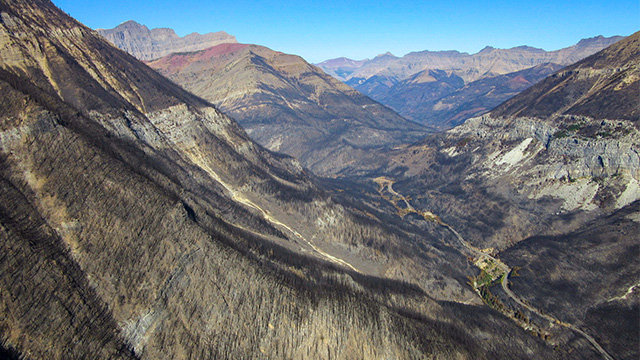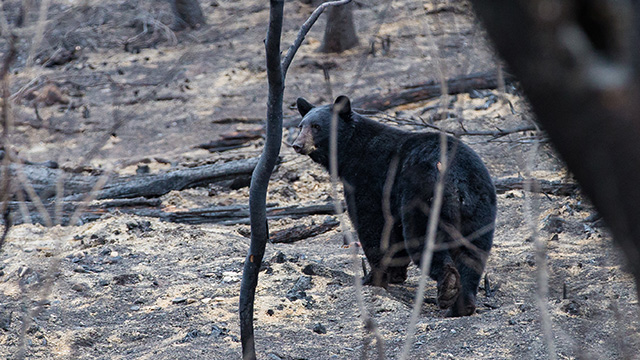
Kenow Wildfire
Waterton Lakes National Park
Blog
Discoveries, projects and research following the 2017 wildfire
Timeline
Burn severity map and day-by-day-snapshot of the Kenow Wildfire.
Photo gallery
Photos captured before, during and after the fire.
Post-fire renewal
Regrowth and resiliency of the landscape.
On August 30, 2017, after an intense lightning and thunder storm, fire management staff in Waterton Lakes National Park detected a wildfire on Kenow Mountain, about 10 kilometres from the park boundary in British Columbia. Exceptionally hot weather, strong winds and extremely dry conditions fuelled the extreme behaviour of the Kenow Wildfire over the next week.
Parks Canada worked closely with partner agencies and neighbouring jurisdictions to prevent the spread of fire. An evacuation alert for Waterton Lakes was issued on September 5, followed by an evacuation order on September 8. View timeline for more key dates.

The Kenow Wildfire firmly established itself in Waterton Lakes National Park on September 11, moving northeast along the Akamina Parkway. Later in the evening, flames were visible from the Waterton townsite and on the north side of Crandell Mountain. The wildfire began to move north quickly, spreading through the grasslands along the Entrance Road. Overnight, the wildfire moved north and east out of the park and into adjacent lands.
In the end, the wildfire burned approximately 35,000 hectares, including 19,303 hectares in Waterton Lakes National Park. Over 80% of the hiking trail network was affected. In addition, the Visitor Centre, Crandell Mountain Campground, many buildings at Canyon Youth Camp, Alpine Stables, staff housing and associated infrastructure such as water and electrical systems were destroyed.
Wildlife after the fire

The Kenow Wildfire was a fire of exceptional severity. Under less severe circumstances, larger animals are usually able to flee a wildfire and smaller animals may seek refuge underground. However, the Kenow Wildfire’s rapid growth and extreme behaviour created a situation where mortality of wildlife occurred. The fire moved quickly during the night and the speed of growth compounded by heavy smoke limited the possibility for wildlife to escape its path.
But many animals survived. Healthy animals, such as elk, deer, moose, bears and sheep were observed within the fire area soon after, despite limited feeding opportunities. Over the years and seasons, the land has rejuvenated itself and wildlife continue to thrive in Waterton Lakes National Park.
Wildlife and wildfire - Waterton Lakes National Park
Transcript
This timelapse video was created using still images from a remote camera which was attached to a tree as the Kenow Wildfire burned in Waterton Lakes National Park in September 2017. It shows wildlife using the trail shortly before and after the wildfire burned through.Looking ahead
This landscape has evolved with fire and will transform over time. Wildfires occur naturally and fulfil critical ecosystem functions, with the positive ecological effects usually greater than the negative. These are dynamic ecosystems, changing and adapting in response to natural forces. For example, the Kenow Wildfire removed canopy cover in the park which provided an opportunity for smaller, ground-based plants to establish.
Since the Kenow Wildfire, Parks Canada has undertaken perhaps the largest post fire research project in Canada to study the fire’s effects on the land. Park infrastructure was rebuilt in the following years as well.
- Date modified :